3 The Nurse Family of Hanham
This chapter will document my research into my male line, the Nurse ancestors (Figure 3.1) of my great-grandfather Robert Francis Nurse (Section 3.1) and his wife, my great-grandmother Sarah Elizabeth Nurse.
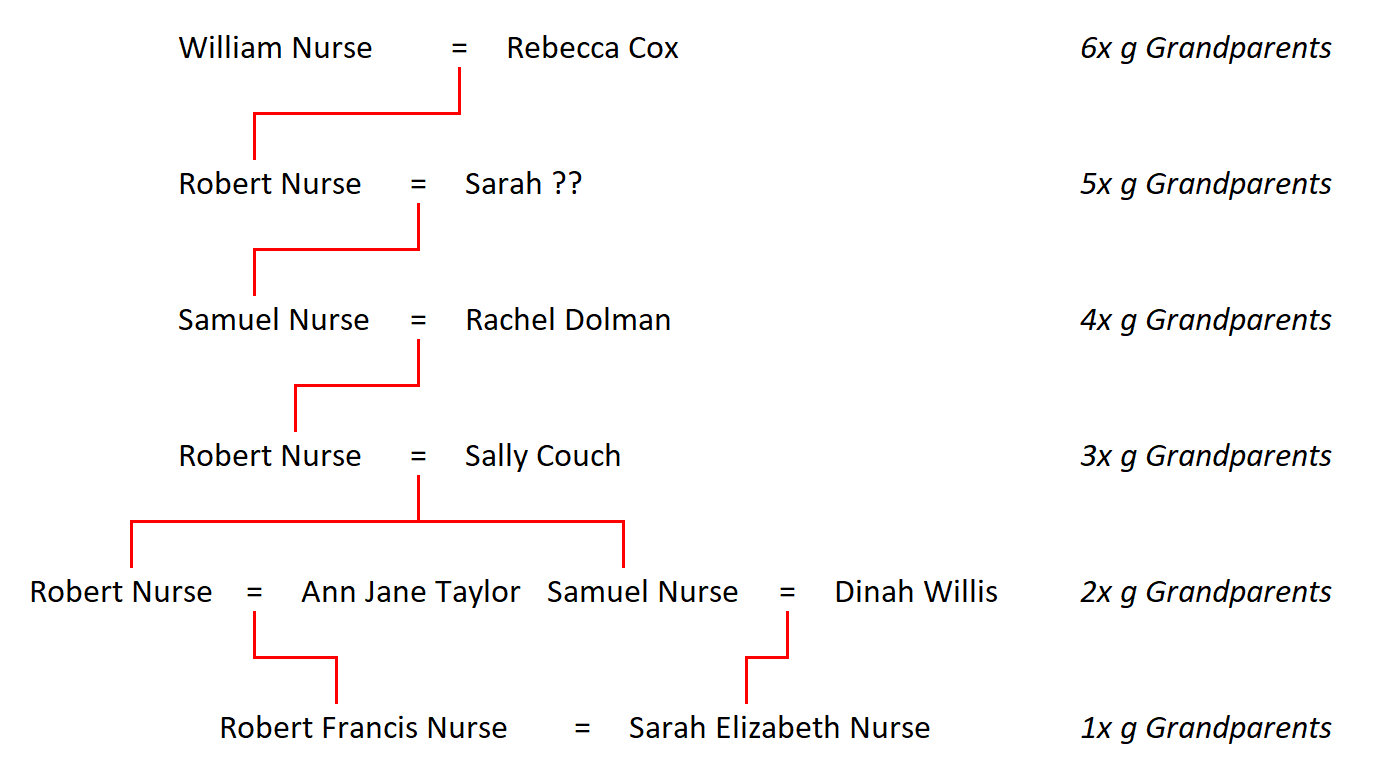
In a previous chapter in a section on the origin of the Surname Nurse (Section 1.2) - I discuss that I have traced the family back with a high degree of certainty to a Robert Nurse of Compton Dando (Section 3.6). Robert and has wife Sarah were living in Compton Dando by the 1730’s.
While less certain I believe that Robert was the son of William Nurse of Chew Stoke.(Section 3.7) William was living in Chew Stoke at the end of the 17th century - in 1694 he married Rebecca Cox (in the neighbouring parish of Norton Malreward).
I haven’t been able to push the Nurse line back any further with any certainty but at the end of this chapter I will present a couple of theories.
Many family histories start with the earliest known ancestor and work forward in time. I have decided to start with my most recent ancestor, my great grandfather Robert Francis Nurse and his wife my great grandmother Sarah Elizabeth Nurse.
3.1 Robert Francis Nurse of Hanham (Born 1855)
Great Grandfather – FFF1
Robert Francis Nurse my great grandfather was the eldest son of Robert(Section 3.2) and Ann Nurse.
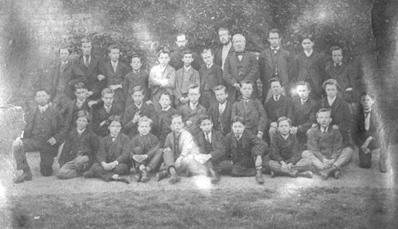
Robert Francis was born on the 21th August 1855, not long after his parents marriage, and baptised at St Michael’s Two Mile Hill in St George’s on 8th June 1856.2 He was well educated, having finished his education at Dr. Nunn’s School, a private boarding school in Portland Square, near the center of Bristol, with his younger brother, William Richmond.3
In October 1876, when Robert Francis came of age the malting business was offered to him at the price of £415: 6s (a valuation of £638: 17s: 5d less £223: 11s: 5d, which he was due under his father’s will). Robert accepted the offer and proceeded to pay off the sum over several years. (see Section A.1)
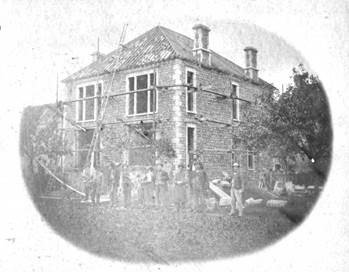
The malting business was run in the parish of Hanham Abbots, in premises at the back of Robert’s Uncle Samuel’s house, “The Strattons”. (see Section 3.3) This was the “ancestral” Nurse family home, from the time that the Nurse family moved to Hanham (from Compton Dando) and started the malting business in the late 18th century.
The house itself stood in front of the malting house and both the house and malt house dated from at least 1699. The malting house is still standing, although Robert Francis built a new house called “The Lindens” (Figure 3.3 and Figure 3.4).
I have a copy of a document (see Section A.2) that my great-aunt Frances Ellen transcribed (Nurse 1953) titled “Abstract of Title to Strattons” which starts with a paragraph dated 8 & 9/ 11/ 1699 which is a lease agreement between Humphrey Watmore and Abraham Gibbons of the one part and Hugh Connick of the other part. Interestingly, Hugh Connick was my 7th great grandfather.
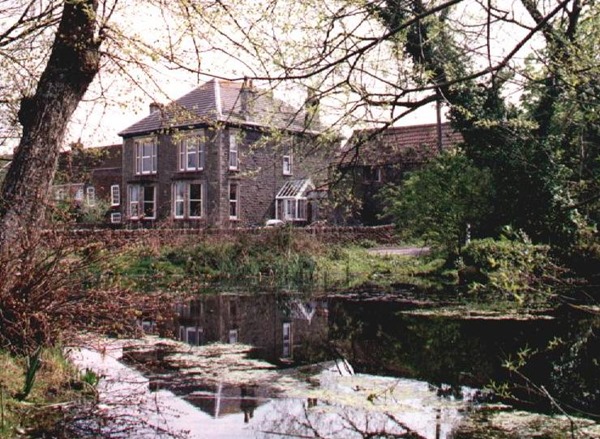
Samuel, Robert’s uncle, lived in the house with his daughter Sarah Elizabeth (who was born 11th March, 1850). Presumably Robert Francis worked here under Samuel’s guidance as he learned the family business. It was probably during this time that he formed his relationship with Samuel’s daughter (his cousin), since on 17th December 18784 they were married in the parish church of Hanham Abbots.
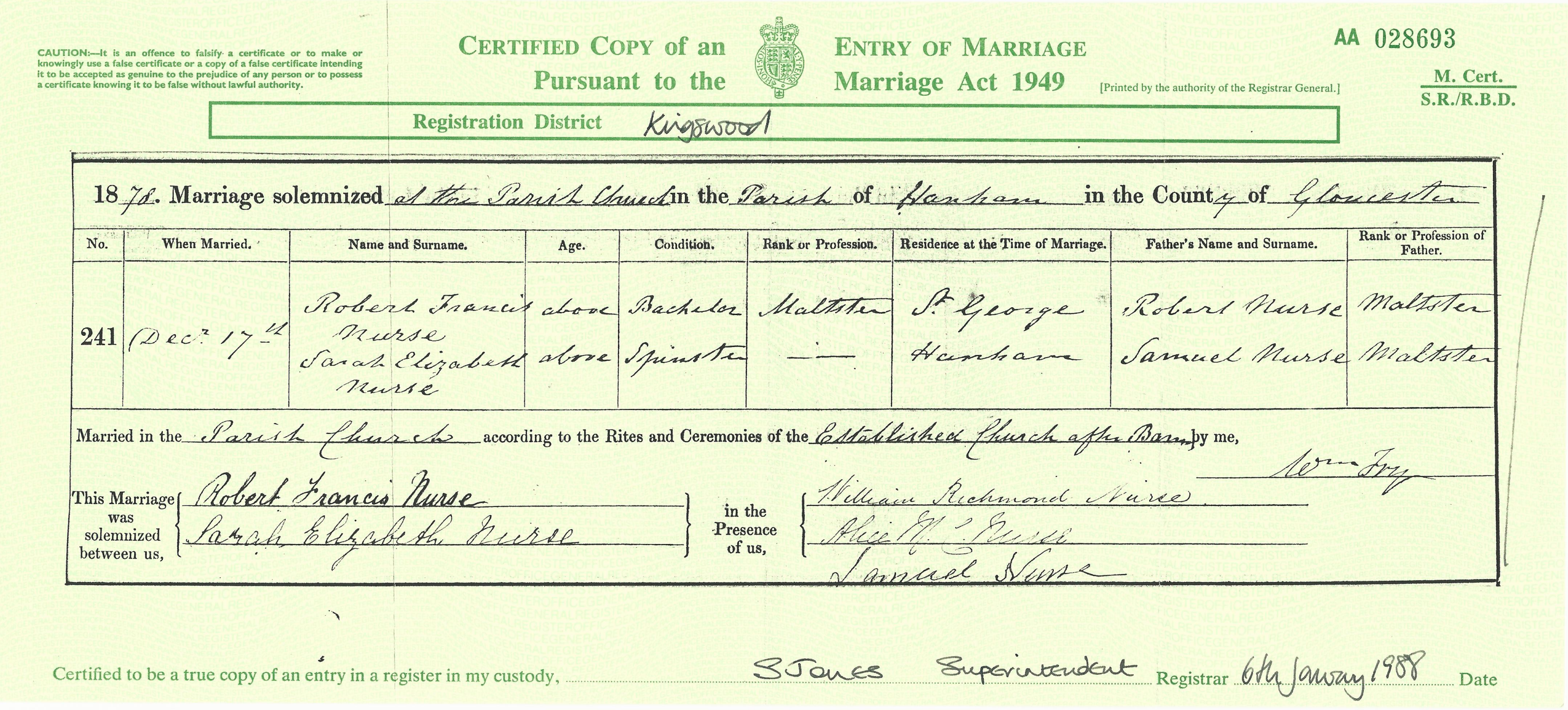
By this time Hanham was a parish in its own right, rather than a chapelry of Bitton and was licensed for weddings. The couple moved into “Strattons” with Sarah’s father.
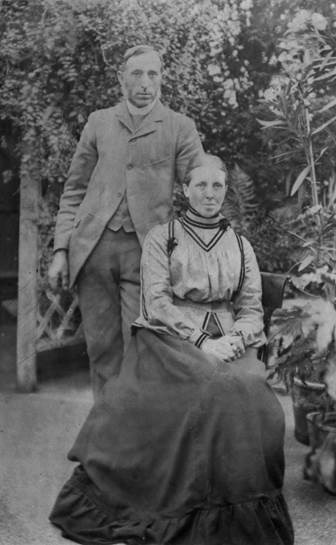
By the census of 1881 Samuel had retired from the business,5 although in 1880 Robert Francis was already named as the licensee of the malthouse, when dealing with the Inland Revenue and Customs and Excise. The newly introduced Inland Revenue Act had transferred the duties on malt and maltsters to beer and brewers and resulted in Robert and Samuel having to pay duty at the rate of 6s 3d on the ordinary barrel (i.e. 36 gallons) of beer.
All of Robert and Sarah’s 5 children were born before the new house was complete; Edward Robert the eldest (born 27th September 1879), Frances Ellen (born 10th April 1881), William Richmond, my grandfather (born 26th April 1882), Arthur Francis Willis (born 30th September 1883) and Frederick Charles (born 20th February 1885).
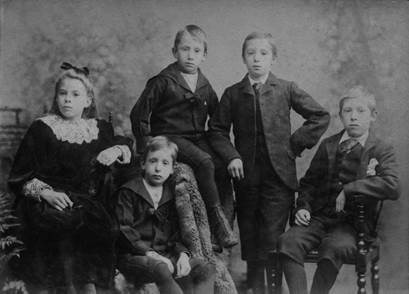
The children were all baptised at Hanham Abbots church. They were all, at least initially, educated at the nearby Hanham Court School, although their later education was at private schools. At least two of the boys attended a boarding school on the west of Bristol, while the youngest two boys finished their education at the Christ Church National School in Hanham.
It is not clear whether Robert employed workers in the brewery, but it is evident that he did at least some of the deliveries himself, and that he was actively involved in the running of the business and was not just the proprietor.
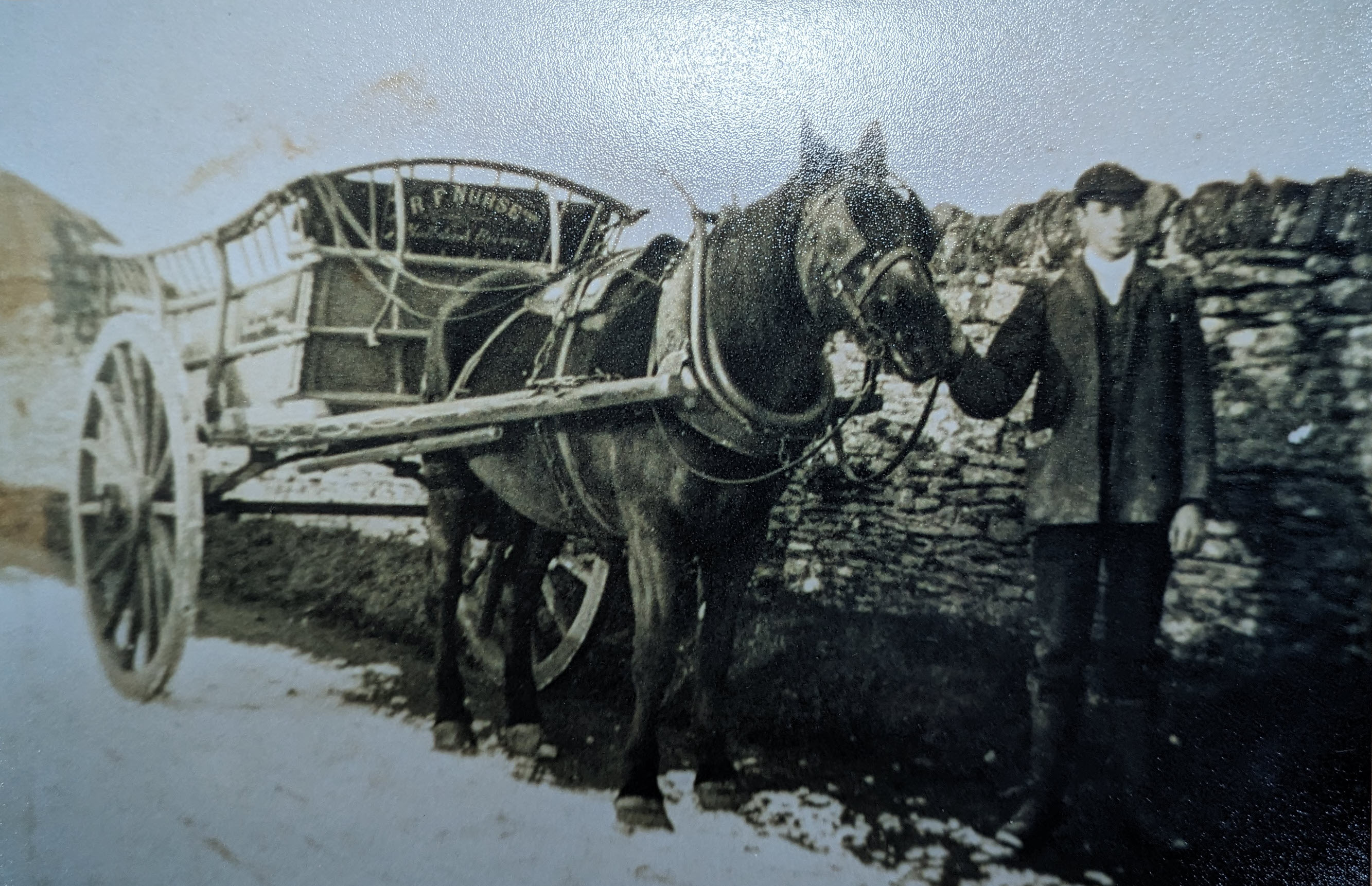
The beer delivery round, which took him to the surrounding areas of Kingswood, Oldland Common and Hanham, was an occasion for Robert to spend time with his children, who he took with him (in turns).
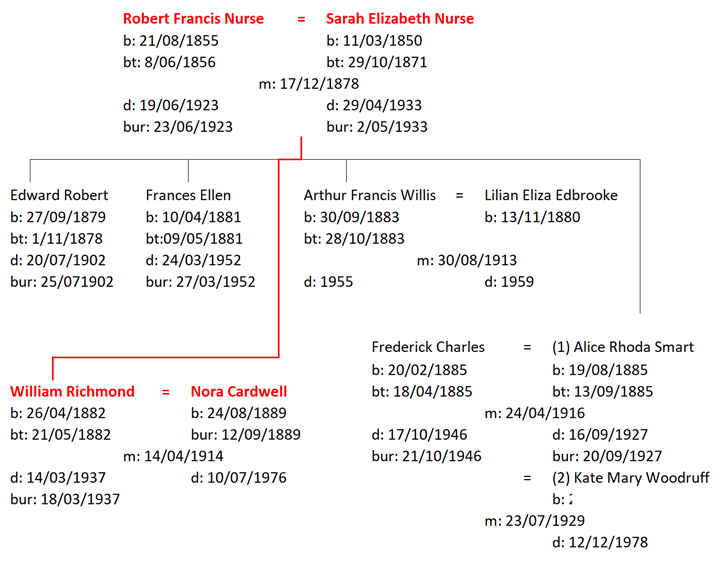
Robert as well as being a successful businessman was very religious. The family attended three churches regularly - Hanham Abbots (just across the green from their home); Christ Church, Hanham, which became Hanham Abbots mother church when it again became a chapelry, and St John’s Keynsham (across the river Avon), where the family had their own labelled pew.
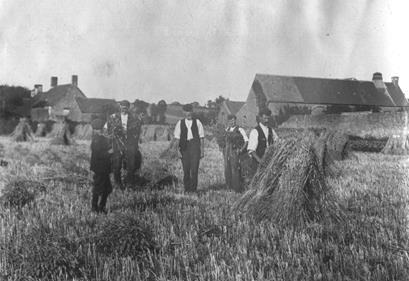
The family would attend as many as three services a day, although not necessarily together. The whole family would usually attend the morning service at Hanham Abbots, Sarah would attend the afternoon service and Robert would attend the evening service in Keynsham, sometimes with one or more of the children.
Robert’s main involvement was with Hanham Abbots Church and parish and it was his church duties that led him into local politics. Early in his married life he began attending the vestry meetings and from there became sidesman, churchwarden and in 1888 he was elected Parish Warden6. In 1894, when the Hanham Abbots Parish Council was formed he was appointed as its first Chairman - a position he held until his death. He was also appointed Churchwarden at Christ Church, Hanham in 1885.
In 1894 he was elected to Warmley District Council7 and in 1900 he was appointed Chairman - again, a position he held for the rest of his life. He also served on several committees and was, in the early 1900’s appointed as a Justice of the Peace for the County of Gloucestershire under the Lawfords Gate Division.8,9
One further appointment that would have been of considerable interest to Robert was that of a member of the Lawfords Gate Highways Board and as elected Way Warden for the Hanham Abbots Parish. His delivery round meant that the state of local roads would have been of interest to him and their improvement would have been of prime interest, particularly with the advent of cars and trucks.
Robert Francis Nurse died on the 20th June 1923.10, and was buried at Christ Church, Hanham on 22nd June.11 His wife Sarah Elizabeth lived another 10 years dying on the 29th April 1933. She was also buried at Christ Church, Hanham on 2nd May 193312:.
In his will Robert left most of his property, the Lindens and the Malting business, to his wife Sarah Elizabeth and his eldest surviving son, my grandfather, William Richmond Nurse13.
3.2 Robert Nurse of Hanham (Born 1821)
2nd Great Grandfather – FFFF
Robert Francis Nurse’s (Section 3.1) father Robert Nurse, my great-great grandfather was the youngest child of Robert Nurse (Section 3.4) and Sally Nurse (nee Couch).
Robert was born on the 30th April 1821 and baptised at St. George’s Hanham on the 30th Dec 1821.14

Not much is known about his early life. During the late 1840’s he is listed as an elector for the Western Division of Gloucester living in Hanham Green15. By 1847,16 while he is listed as an elector in Hanham, as he owned property there, he is listed as resident in St George’s the neighbouring parish in the City of Bristol.

In the 1851 Census17 he is listed as resident on Bath Road in St George’s, where his occupation is given as Licensed Victualler. According to Bristol’s Lost Pubs18 he was the licensee of the Pied Horse on Summerhill Road.
In 1854, at the age of 33 he married Ann Jane Taylor at St. Michael, Two Mile Hill on 30th May, two months after his father Robert died. In the marriage certificate (see Figure 3.13) his profession is given as Maltster, so by then he was obviously working in the family business.19
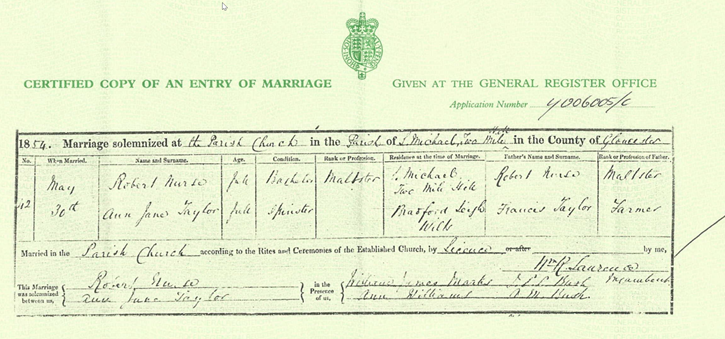
It is not clear how Robert and Ann Jane met, as Ann’s family were living in Winsley, just outside of Bradford on Avon in Wiltshire. However there is a possible clue in the marriage certificate. One of the witnesses to the marriage is Ann Williams. I believe that Ann Williams is Ann’s maternal cousin, as her Aunt Eliza Hanks had married George Williams, a farmer in Kingswood, and one of their children was called Ann Williams, so it’s possible that Ann Jane met Robert while visiting her cousin Ann.
Ann Jane Taylor, Robert Nurse’s wife, was a descendant of John Taylor, the Landscape Painter. (Section 6.3) John Taylor’s father, Abraham Taylor was a prosperous Philadelphia merchant and friend of Benjamin Franklin, before the American Revolution. It is through the Taylor family (Chapter 6) that later generations of the Nurse family are linked to the landed gentry and especially to the Gordons of Philadelphia, Pennsylvania (Chapter 9) - a junior branch of the Scottish Gordon clan, and the Luther family of Kelvedon Hatch, Essex, an important family of that county (Chapter 10).
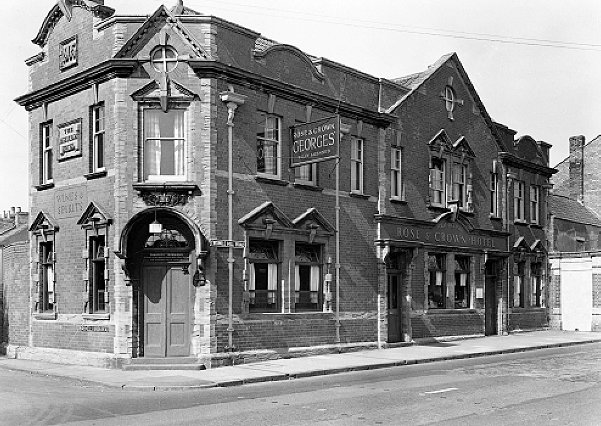
Robert and Ann were Innkeepers at the Rose and Crown, a public house in a fairly good area of St George, on the eastern outskirts of Bristol.20 The licensed trade had long been a family tradition, and several members of the family ran public houses in the locality.
As mentioned above Robert had also inherited a share in the malting business from his father, (Section 3.4) which was operated by his older brother Samuel (Section 3.3) after the death of their brother Jonathan in 1862.
Their other brother Silas, operated the Crown Inn in Longwell Green for at least 20 years.21
Over the next ten or eleven years, Robert and Ann Jane had six children, four of these children surviving infancy.
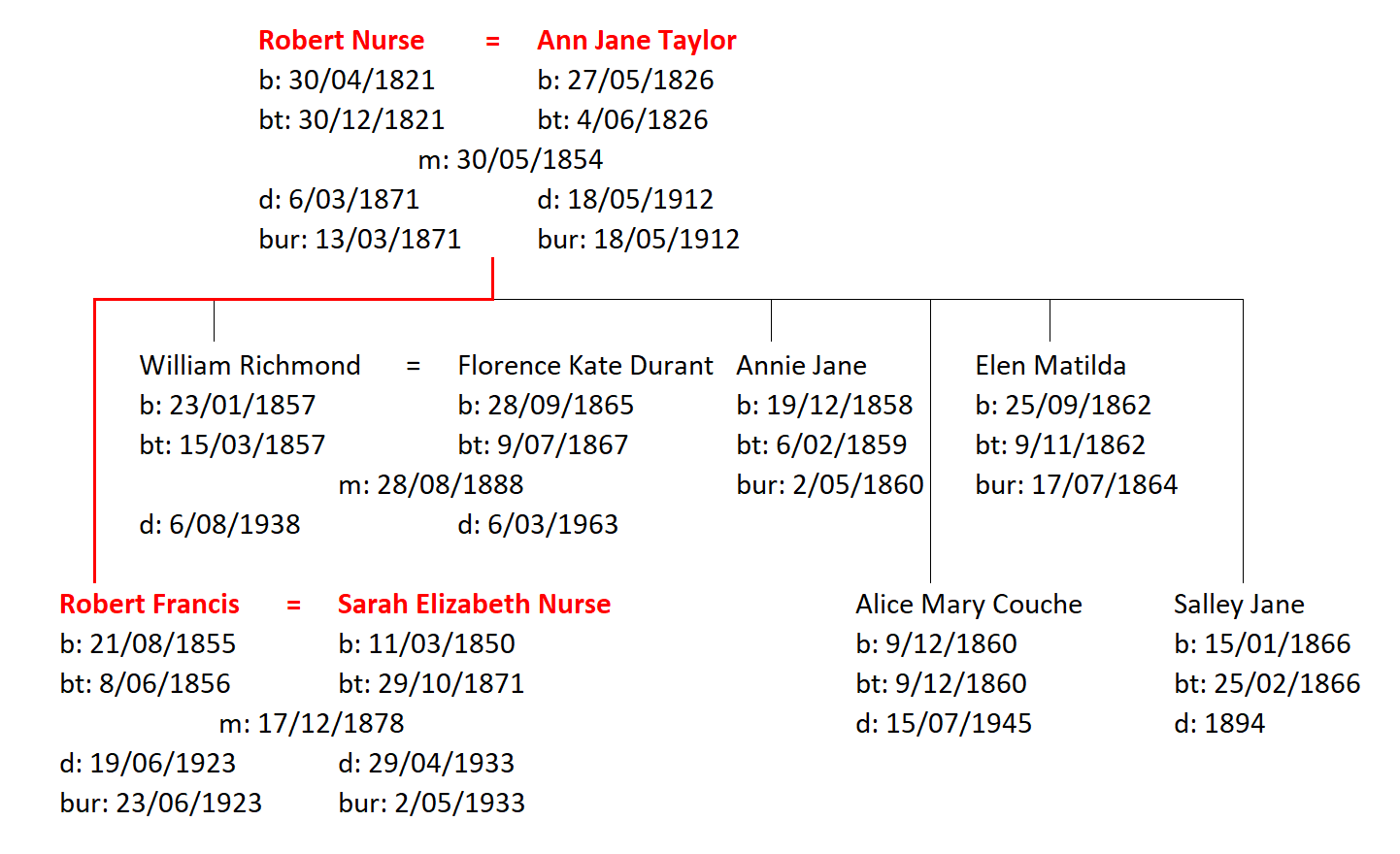
The family, although not rich, was fairly well off, running their own businesses and owning a moderate amount of land around the eastern outskirts of Bristol.
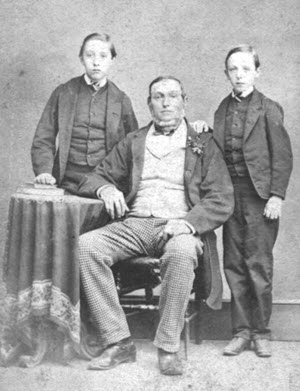
The boys, at least, were well educated, Robert Francis initially attended the local Church School, Two Mile Hill but both boys finished their education at Dr. Nunn’s School, a private boarding school in Portland Square, near the centre of Bristol.
I have already described the life of the eldest boy, Robert Francis (Section 3.1), my great grandfather, who was named after both his grandfathers, Robert Nurse and Francis Fane Taylor (Ann Jane’s father)
The younger boy and second child, William Richmond (named after Robert’s deceased older brothers) grew up to be an auctioneer, organist and choirmaster at St.Paul’s Bedminster.
William was also involved in the early days of professional football in Bristol. In 1894, he was elected as the first chairman of the Bristol South End club, which changed its name to Bristol City Football Club when it turned professional 3 years later and joined the Southern League.22,23
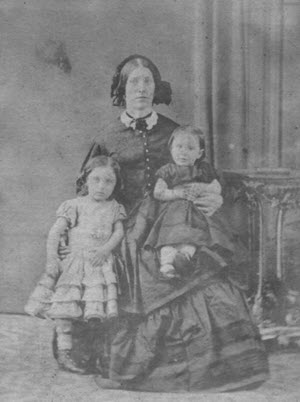
Two of the girls, Annie Jane and Ellen Matilda died in infancy. Neither of the other two girls married, Salley Jane dying in 1894, while Alice Mary Couche (Aunt Alice as I used to hear her called at family gatherings) died in 1945 at Bleak House in Winsley, Wiltshire, just after the end of the Second World War.
On the 6th March 1871 Robert Nurse died, and he was buried a week later at St. Michael, Two Mile Hill. Ann took over as licensee of the Rose and Crown Inn24 and also acted as co-trustee with Robert Willis Nurse (son of Silas Nurse and Robert’s nephew), in the running of her late husband’s share of the malting business.
Robert had directed in his will that they should run the business until his eldest son, Robert Francis (my great grandfather), had reached the age of 21.25 At that time he would be offered the opportunity to purchase the concern at a price to be ascertained by a fair evaluation by “some competent parties to be appointed by the trustees”.
Ann eventually moved to Bedminster where she lived with her surviving daughters. She spent the last few years of her life living in Winsley, Wiltshire, with her younger brother Charles Taylor dying on the 12th May 1912 at the age of 85. She was buried at the parish church of Winsley on 18th May 191226.
3.3 Samuel Nurse of Hanham (Born 1809)
2nd Great Grandfather – FFMF
Sarah Elizabeth Nurse’s father Samuel Nurse was also my great-great grandfather. He was Robert’s older brother, the third son of Robert Nurse (Section 3.4) and Sally Nurse (nee Couch).
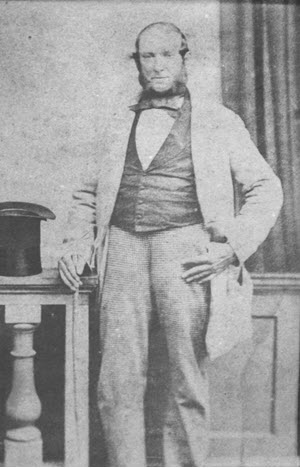
Samuel was born the 12th Nov 1809 and baptized a month later on 10th December at St George’s, Hanham.27 As with his younger brother, not much is known about Samuel’s earlier life, but it is a fairly safe assumption that he helped his father in the malting business.
He was still living with his parents when the 1841 Census was carried out.28 His occupation was not mentioned, but both his father and his brother Jonathan, who is the adjacent entry and may have lived in the same house are both described as Maltsters. The Census says Samuel was 25 (in the 1841 census ages of adults were supposed to be rounded up to the nearest 5 years), but he was actually 32. His occupation is stated as Maltster in the 1851 Census.29
The next mention of Samuel was when he married Dinah Willis on Christmas Day 1848.30 Dinah was the youngest31 of six children (5 daughters and one son) of Robert Willis and Dinah Leonard32.

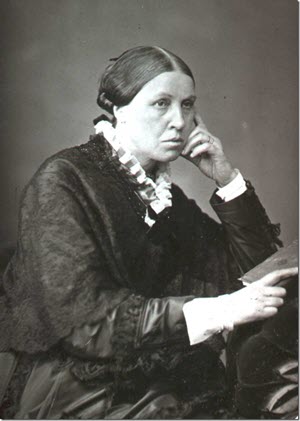
Willis is quite a popular name in Hanham, most of the Willises being labourers or quarrymen. Robert however, was quite well off, being classified, as a Land Proprietor in the 1851 census33 and as a Yeoman (see “Yeoman” (2023)) in the 1861 census34 and his will35, where he leaves most of his estate to his daughter Dinah Nurse, Samuel Nurse’s wife.
I have a whole chapter (see Chapter 4) of this book dedicated to the history of the Willis family and Leonard family.
While both Samuel and his brother Robert had inherited the family malting business from their father Robert and brother Jonathan, it was Samuel who operated the business.
Samuel and Dinah had three children a boy Robert Willis (who died in infancy) and two daughters Sarah Elizabeth (my great grandmother) and Frances Willis. (Figure 3.21)
Dinah died on the 20th November 1877, being buried at Bitton on the 24th November 187736. Samuel live for another four years, dying on 23rd May 1881 and being buried at St. Mary, Bitton on 26th May 188137.
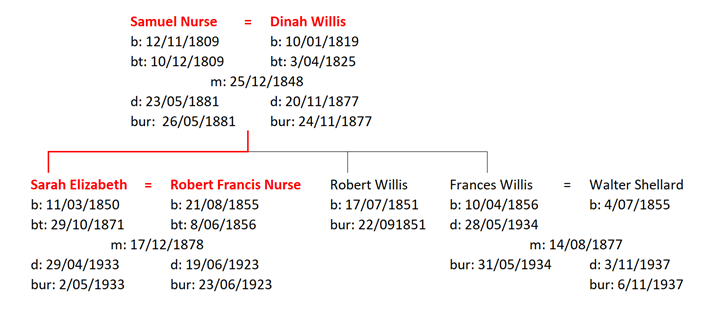
While I have not found a will for either Dinah or Samuel, Samuel apparently left his share of the Malting business to his son-law Robert Francis Nurse (who had already inherited his father’s share, and who therefore became the sole owner of the business).
3.4 Robert Nurse of Hanham (Born 1782)
3rd Great Grandfather – FFFFF
Robert and Samuel’s father Robert Nurse, my 3x great-grandfather, was the son of Samuel Nurse (see Section 3.5) and his wife Rachel Dolman. He was one of 5 boys to survive childhood. He was baptized at St. George, Hanham Abbots on 28th July 1783.38
There is a record to a previous baptism on 15th February 178039 at St. Mary’s, Bitton, which I believe was an older brother who did not survive infancy. It was quite common to name the next child after a previously deceased child. It should also be pointed out that Samuel’s father, Robert Nurse, died around Christmas 1781 (see Section 3.6).
Robert married Sally Couch at Bitton Parish Church on the 15th March 1803. 40 The marriage was witnessed by Robert Nurse, sen, who I believe was Robert’s uncle, and John Couch who was Sally’s brother.
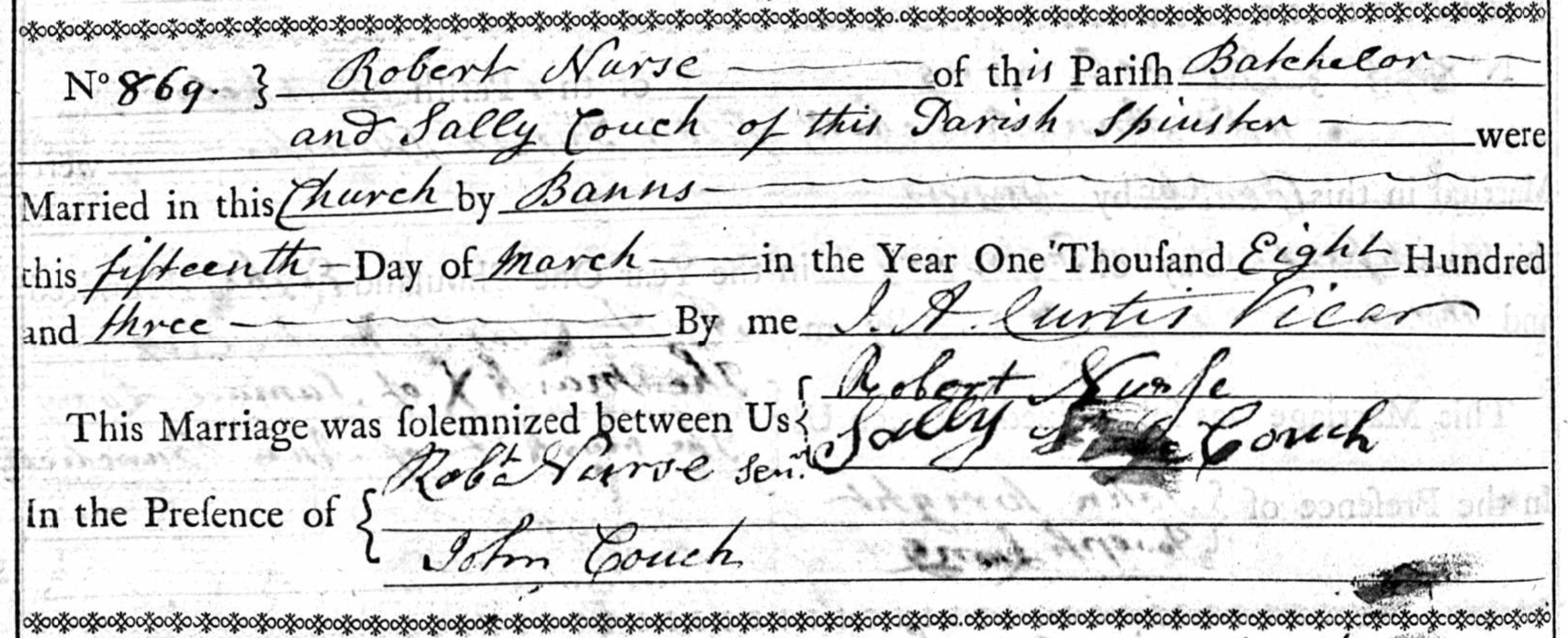
Robert and Sally Nurse had seven children during their first 18 years of married life, one daughter, Rachel - the eldest child and six sons (see Figure 3.23). All of these children, except one - Silas, were baptised at Hanham Abbots Church, and all but William survived childhood and were married. William died in 1814, at the age of six and was buried in Bitton on 21st August 1814.41
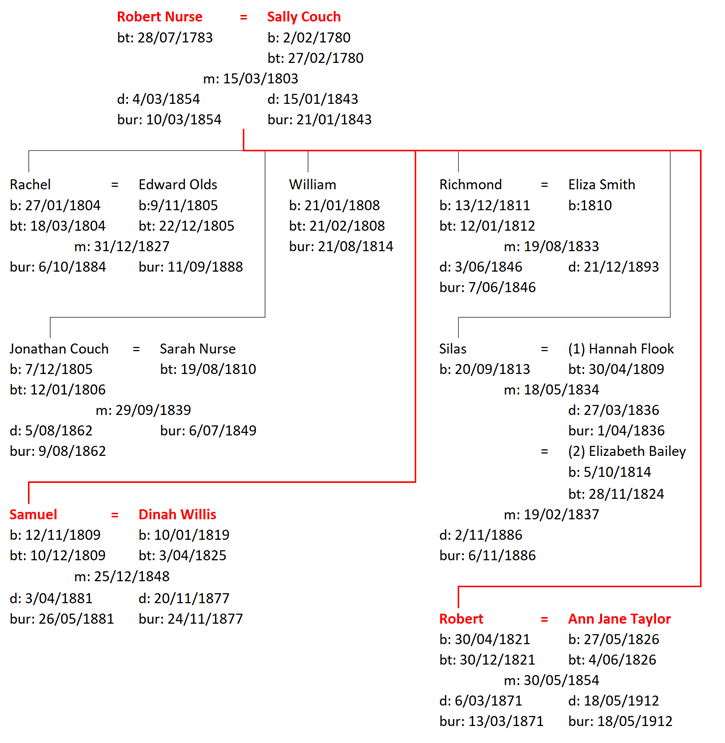
The naming of the children followed the custom of the day - Rachel the eldest (and only) daughter, being named after Robert’s mother; Jonathan Couch, the eldest son (and second child) being named after Salley’s father; Samuel, being named after Robert’s father, and Robert, the youngest being named after Robert’s grandfather (and uncle who had recently died).42,43
Robert had inherited his father’s share of the family malting business when his father died in 1810 and when his uncle Robert died in 1819, he inherited the remaining share of the business, so from 1821 he is listed in the Land Tax returns as the owner/occupier of Wadmore,44 the name of the land associated with the malting house. According to my Aunt Nell’s notes (see Nurse 1953), Robert and Sally moved from Pickwick House in Hanham Mills, Robert’s father’s house, to Stratton’s at this time.
Like his uncle before him, Robert was involved in the parish church of St. George, Hanham Abbots. He was overseer in 182445 and a chapel warden from 1826 to 1830.46 (see Figure 3.24)
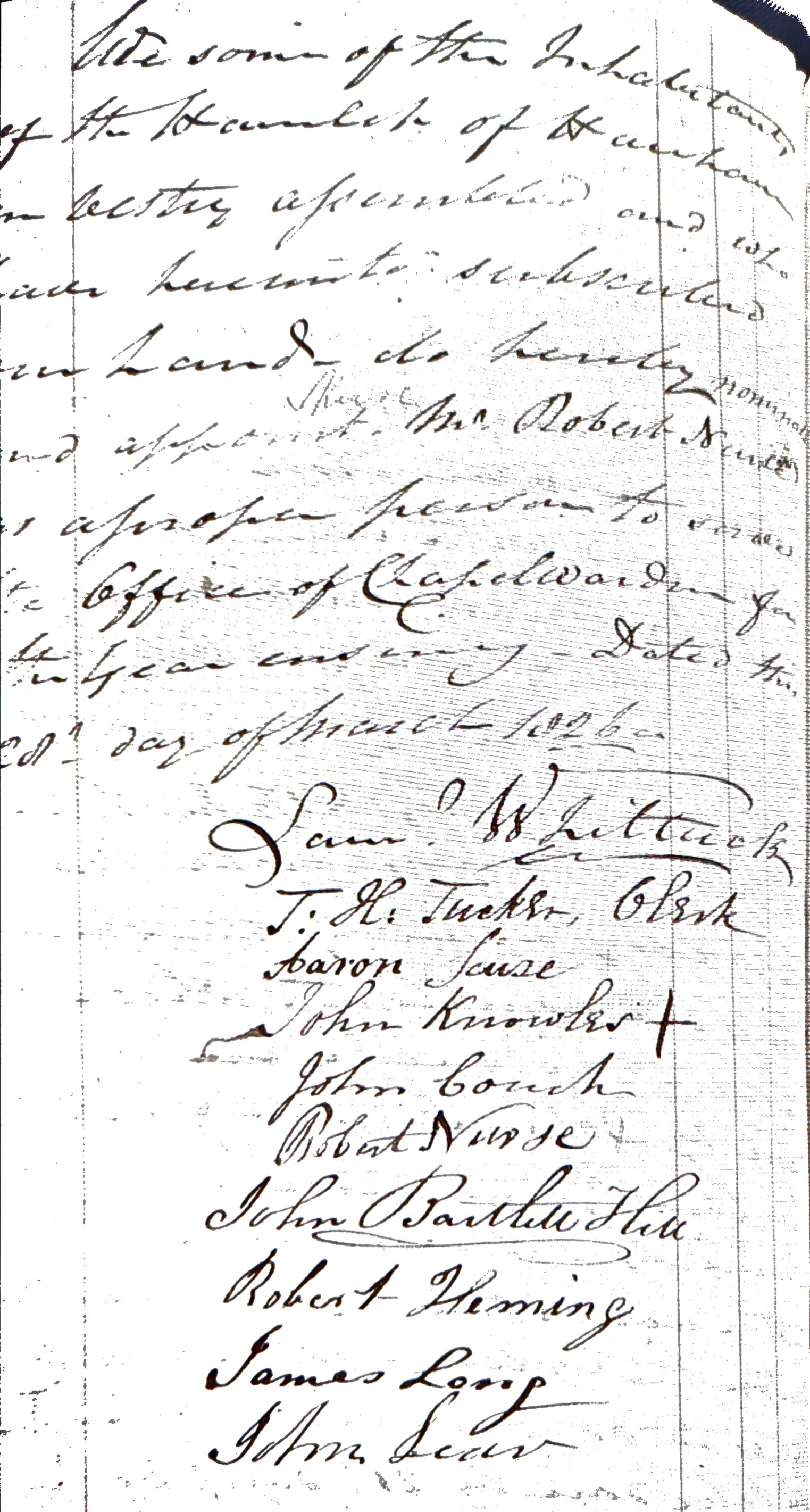
This generation of the family marked a period with the beginning of the industrial revolution where the children were more likely to move away from the family base, to find work. Five of the children were married in parishes in the City of Bristol.
Rachel, who married Edward Olds on 31st Dec 182747 and Silas who married Hannah Flook on the 18th May 183448 were married at St. James, Bristol, while Richmond, who married Eliza Smith on 19th August 183349 and Jonathan who on 29th September 1839 married a cousin - Sarah Nurse50 daughter of Jonathan’s uncle Joseph were both married at St. Stephen’s also in the City of Bristol.
As I have already covered earlier in the chapter (Section 3.2) Robert the youngest’s marriage to Ann Jane Taylor in 1854 at St. Michael’s Two Mile Hill in the east of the City.
Most of the children returned to the Hanham area and were involved in some way in the malting/brewing business. Richmond, however, settled in the city of Bristol. He worked as a carpenter and is listed in Pigot’s 1844 Directory51 and the 1841 census52 as resident on Clark Street, St Paul’s. He died in 1846 and was buried at St Anne, Oldland on 7th June 1846.53
According to the 184154 and 185155 censuses, Silas Nurse settled in Longwell Green as a Shoemaker, although he later joined the other brothers as a brewer (1861 Census56) and eventually became a licensed publican (1871 Census57). The 1863 Post Office Directory lists him as the licensee of the “Crown” Public House in Longwell Green.58
Sally was the first to die in 1843 at the age of 62 and was buried at St. Anne Oldland on 21st January 184359. Her husband outlived her by 11 years dying in 1854 at the age of 72. He was also buried at St Anne, Oldland on 10th March 185460. They were buried together with Robert’s uncle (see Figure 2).
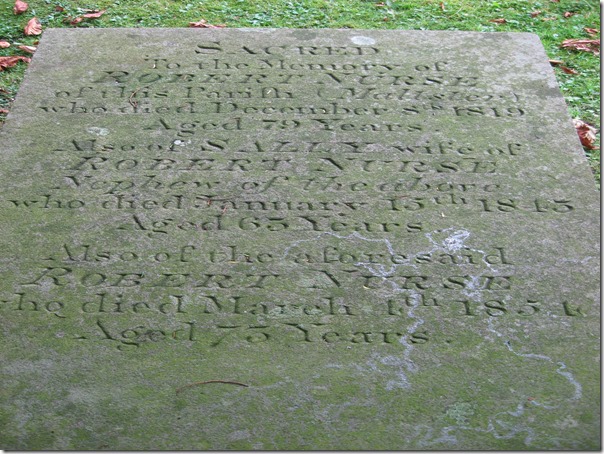
In his will61 Robert Nurse left the malting/brewing business to his three sons, Jonathan, Samuel and Robert and to their heirs. When Jonathan died on 8th August 186262 without an heir he left his share in the business to his two brothers.63
3.5 Samuel Nurse of Hanham (Born 1748)
4th Great Grandfather – FFFFFF
The first reference to a Nurse family living in the Hanham Abbots area of Hanham was the baptism of William Dolman son of Samuel and Rachel Nurse on 12th April 1779 at St. George’s Hanham, a chapelry of the Parish of St Mary, Bitton. Interestingly, while the Bishop’s Transcripts64 for the parish records William’s baptism as 12th April 1779, the Parish Register65 records it as the 22nd Aug 1779 (aged 6 months).
Just to confuse matters even further, the Parish Register has the following entry for 12th April 1778 - “William Dolman Son of Samuel & ….”. Ancestry’s digitisers have assumed that the father’s name was Dolman, but it seems very suspicious given that the date is exactly the same as the Bishop’s Transcripts except a year earlier!66
If we assume that the Parish Register has the year right then it is possible that the first entry for 12th April 1778 is for a child that died in infacncy, and, as is quite common Samuel and Rachel named their next child William Dolman Nurse also.
Samuel and his wife Rachel (nee Dolman) had been married in the neighboring parish of Keynsham on the 11th October 1772.67
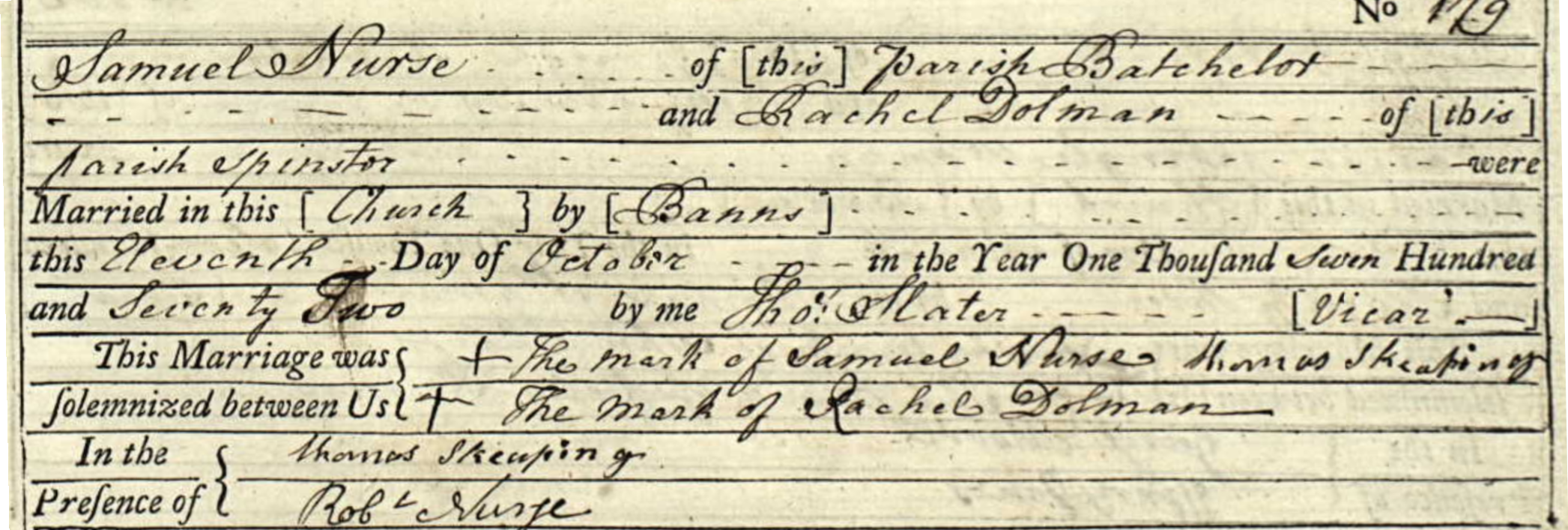
Samuel was born in Compton Dando, Somerset, the neighbouring parish to Keynsham to a Robert and Sarah Nurse. He was baptised in Compton Dando on 24th February 1747 (see Figure 3.27).68 He was one of 6 children, 4 boys and two girls. Samuel’s older brother Robert and his younger sister Sarah, all ended up moving to Hanham. Robert witnessed Samuel’s marriage as well as that of his sister Sarah, six months later on 29th April 177369, to Robert Ashley of the parish of Burnett, another neighbouring parish.

Samuel and Rachel initially settled in Keynsham as their first child, Rachel was baptised there on 3th July 1774.70 However in 1776 they were living in the City of Bristol, on Unity Street in the Parish of St Philip and St Jacob, where a second daughter, Sarah, was born and Samuel’s profession is registered as Maltster.71

Samuel moved to the Hanham area sometime between 1776 and 1778, when the first son William Dolman Nurse was baptised (see above). Apparently, Samuel’s older brother, Robert also moved to Hanham at around that time and took a job as a servant to Henry Creswicke of Hanham Court. The Creswickes were the main land owning family in the area living at Hanham Court next to the Church, and when Samuel Creswicke died in September 1778 he left Robert 5 guineas in his will. This was a significant amount in those days, possibly enough to start or buy a business.
Also I give unto Robert Nurse (late servant of my said brother Henry Creswicke) the Sum of 5 guineas.72
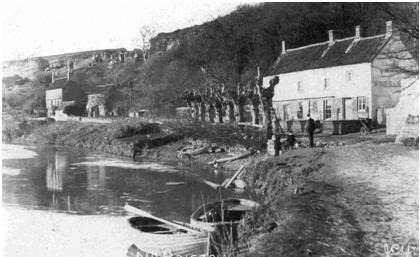
According to my great-Aunt Nell’s notes (Nurse 1953) Robert and Samuel moved into Pickwick House at Hanham Mills. Also according to my great-aunt Nell’s notes, Samuel worked as a quarryman in a large quarry at the back of their premises called “Sam Nurse’s Quarry” (Figure 3.29).
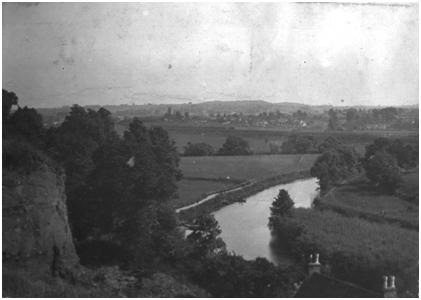
It is not clear when the brothers started the malting business or whether they purchased an existing business, but by 1780, Robert is listed as the occupier/tenant of part of Wadmore, owned by Hugh Stratton.73 Wadmore was the land behind the Malthouse at “Strattons”, and in 1792 he is listed as the occupier of “Strattons” according to the Abstract of Title (see Section A.2).
While I believe that both brother’s had a share of the business, it appears that Robert was the main operator of the business.

Robert, in particular was quite involved in the life of the local church, acting as Chapel Warden many times between 1794 and 1811 (see Figure 3.31).74 He is also listed as an assessor on the 1786 Land Tax return75.
Figure 3.32 shows a map of Hanham Abbots. The quarry is clearly shown at the bottom of the map. Pickwick House, where Samuel and his family lived is just below the quarry. Stratton’s, where Robert lived and worked is shown as Hanham Green Bewery. Hanham Court, the ancestral home of the Creswicke family, where Robert Nurse served as a servant, when he first arrived in Hanham is shown next to the church.
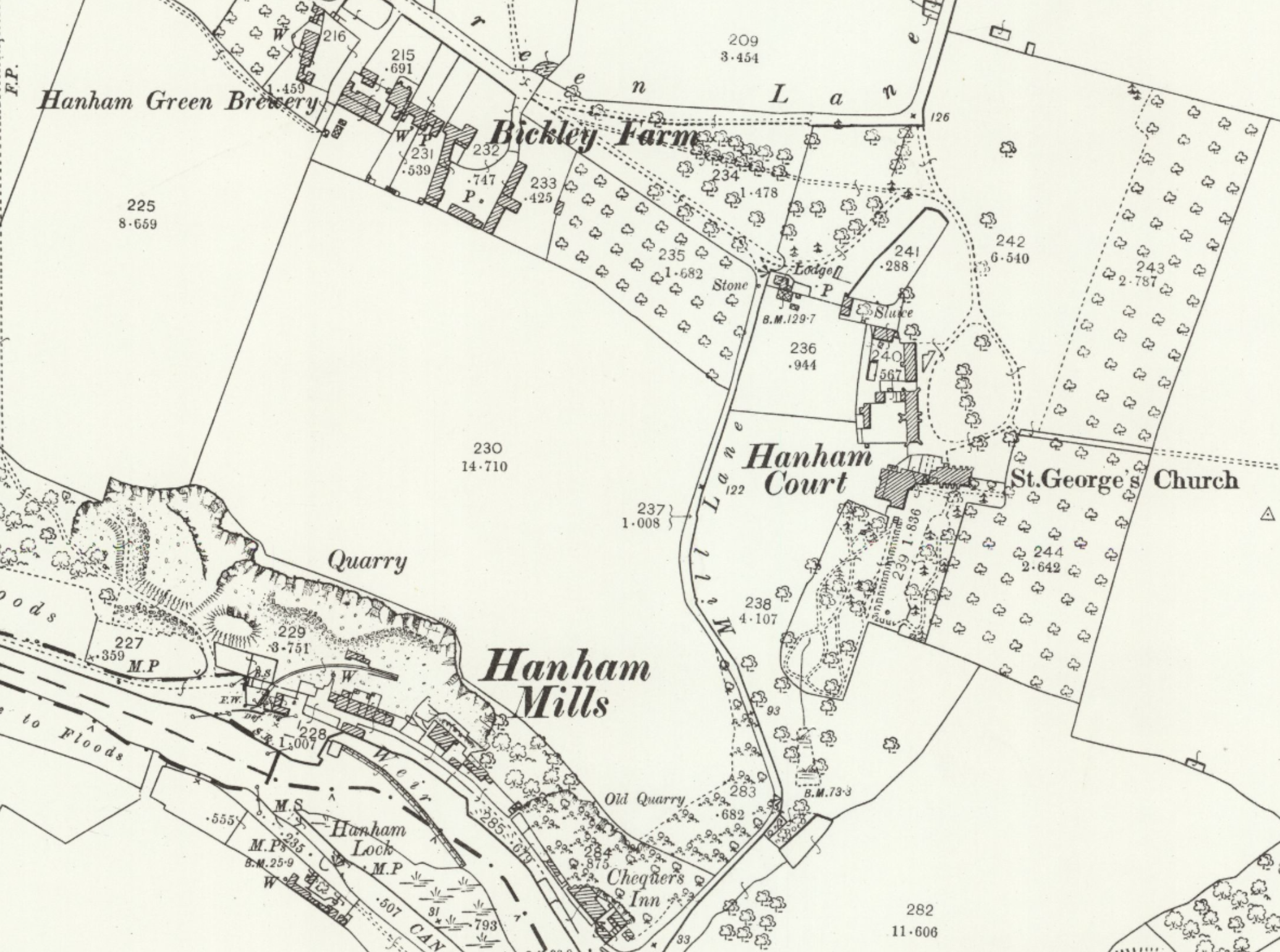
Over the course of the next fourteen years eight more boys were born to Samuel and his wife Rachel (see Figure 3.33), all of whom were baptized at St. George’s Hanham.
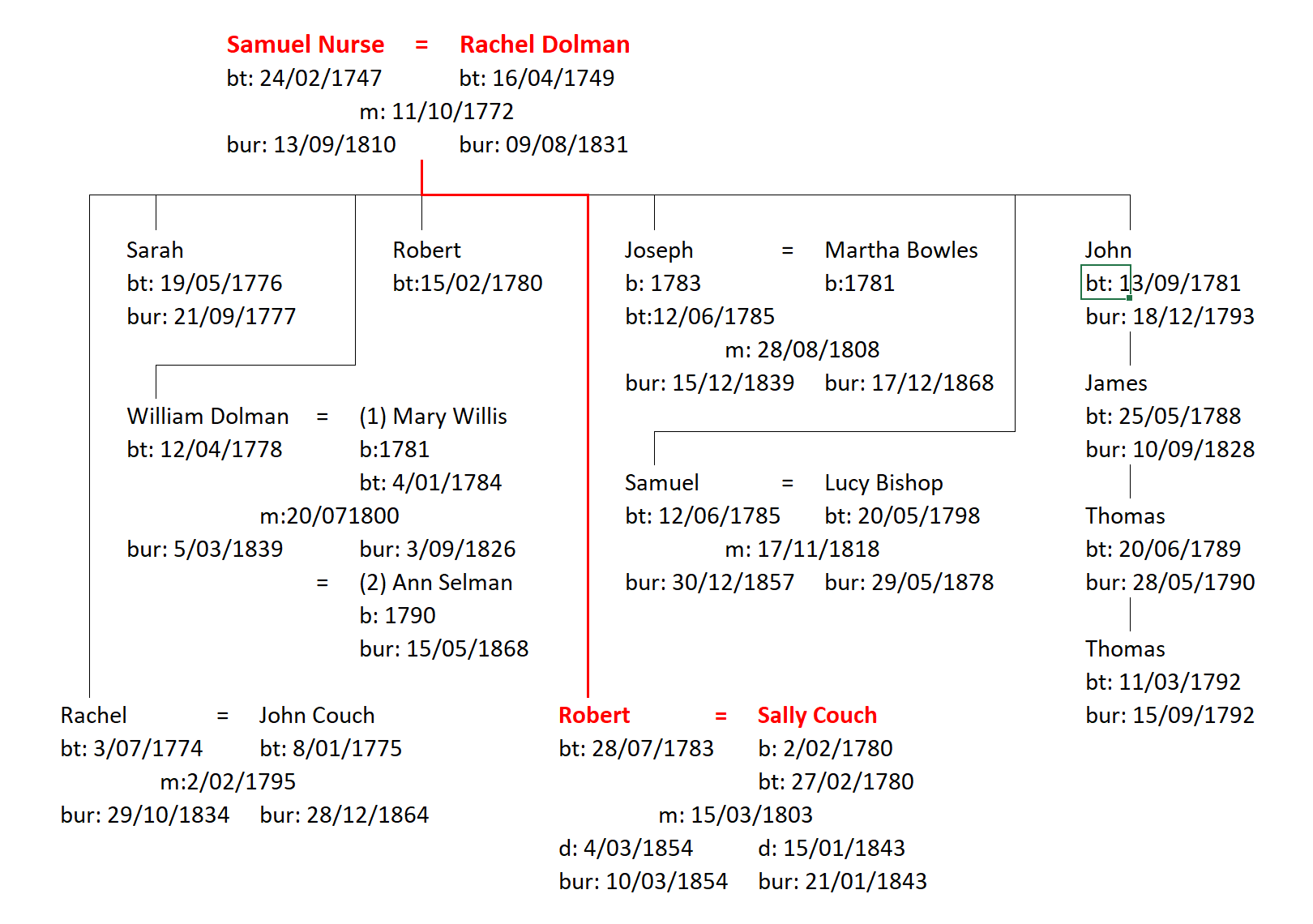
Although there is no direct evidence, it appears that at least four; Sarah, Robert, Thomas and Thomas (and maybe five, William) of Samuel and Rachel’s children died in infancy. Most of them were buried at St John’s Keynsham, Rachel’s ancestral home. Sarah died and was buried on the 21st September 1777. Although the entry only says an “infant” of Samuel Nurse of Bristol, I believe that infant was Sarah. This entry (see Figure 3.34) indicates that by September 1777 Samuel was still resident in Bristol.76

Rachel, William, Robert, Joseph, Samuel and James stayed in the area, married and had their own family. Rachel, William, Samuel and Robert were all married at Bitton Parish Church - apparently the chapelries of Hanham and Oldland were not licensed for weddings or burials, at this time.
Rachel being the eldest was first to marry on 2nd February 1795 to John Couch,77 the son of Jonathan and Betty Couch. John Couch was a Stone Quarryman. This occupation was very common in the Hanham area. Rachel Couch died in 1834 and was buried at St. Mary Bitton on 29th August 183478.
As described above, Robert Nurse (Section 3.4), the eldest surviving boy, married Salley Couch at Bitton Parish Church on the 15th March 180379. John and Salley (or Sarah) were brother and sister. John Couch was born in late 1774 or early 1775 to Jonathan and Betty Couch and baptized on the 8th January 177580. I have documented my Couch family history in Chapter 5.
William Nurse married Mary Willis on 20th July 1800.81 The registers of Hanham Church are full of references to the Willis family - there appears to have been 4 or 5 branches of the family living in the area in the late 18th century. Mary died in 1826 and was buried at St. Mary Bitton on 3rd September 1826.82 Two years later William married Ann Selman, the half-sister of John and Salley Couch. William died in 1839 and was buried at St. Mary’s Bitton on 5th March 183983.
Samuel married Lucy Bishop on 17th November 1818 at the ripe old age of 3384. They had nine children over the next 13 years. Samuel was also a Quarryman, and three – at least – of his sons were Stone Masons.85,86 Samuel and Lucy lived at Hanham Mills in Pickwick House which Samuel inherited from his uncle Robert87. Samuel died in 1857 and was buried at Christ Church, Hanham on 30th December 1857.88
The other child of Samuel and Rachel, Joseph was not married in the parish but in the parish of St Luke, Brislington, where he married Martha Bowles on 28th August 180889. They had a large number of children (seven) baptised in Hanham Church (between 1810 and 1832). Joseph’s occupation is not known, but he was probably also a Quarryman, as two of his sons were both Quarrymen. Joseph died in 1839 and was buried on 15th December 183990 at St Mary Bitton.
Martha outlived her husband for almost 30 years, dying in 1868. She was buried at Christ Church, Hanham on 17th December 186891. Martha was a launderess92 – she probably took up this occupation when her husband died. The family, at least from 1841 on lived at Riverside93.
Samuel Nurse (the elder) died and was buried at Keynsham on 13th September, 181094. He must have been considered somebody of some importance in the area as he was buried in the church itself, rather than in the churchyard. His wife Rachel, died some 21 years later and was also buried at St John’s Keynsham on 9th August 183195
Samuel apparently died without a will so his share of the malting business presumably passed to his eldest son Robert. Samuel’s brother, Robert died a few years after him and was buried at St Anne’s Oldland on 14th December 181996. His will97 gave his two thirds share of the malting business to his nephew Robert, so Robert (the younger) became the sole owner of the business, on his uncle’s death.
3.6 Robert Nurse of Compton Dando (Born 1709)
5th Great Grandfather – FFFFFFF
Samuel Nurse’s father Robert Nurse, my 5th great-grandfather, was born in 1709 in Long Ashton98, and moved to Compton Dando sometime in the early 1730s.

He was either already married when he moved to Compton Dando or he was married soon after he arrived. Either way, I have not been able to find a record of his marriage. I used to think that Robert married Sarah Woodward in Bedminster in 1731, but with the advent of good quality images of the registers on Ancestry.com, I have confirmed that the Robert referenced in the Bedminster Register was actually Robert Palmer not Robert Nurse.
He probably lived for a while in Chewton - just up the road to Keynsham from Compton Dando as I believe his father (see Section 3.7) was buried there in 1714.99
The first reference to Robert and Sarah Nurse in the parish register is to the baptism of a daughter, Ann on 8th July 1736.100
In 1748 Robert leased a cottage101 and some land “on the east side of the highway leading from Woollard to Houndstreet” for the princely sum of 3s 4d payable “at the 2 most usual feasts terms in the year (that is to say) the feast of St Michael the Archangel and the Annunciation of the Blessed Virgin Mary”.
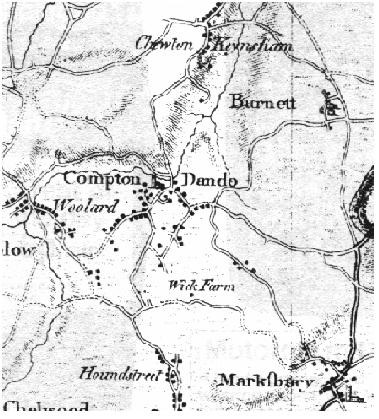
In the lease, Robert is described as a Yeoman of the parish of Compton Dando.(see “Yeoman” (2023)) There is another lease for the same property in 1762 where the rent increased to 4s 0d. Figure 3.36 shows a map of the area around Compton Dando as it was in about 1782, where the road from Woollard to Houndstreet is shown quite clearly.
Over the course of the next 18 years six more of Robert and Sarah’s children were baptised in the parish church of Compton Dando. The two daughters and one of the sons - Thomas - were married in Compton Dando, Ann on 31st July 1757 to Thomas Ford102, Thomas on 26th May 1763 to Mary Long103 (and on 29th July 1781 to Jane Pow104) and Sarah, the youngest, on 29th April 1773 to Robert Ashley105.
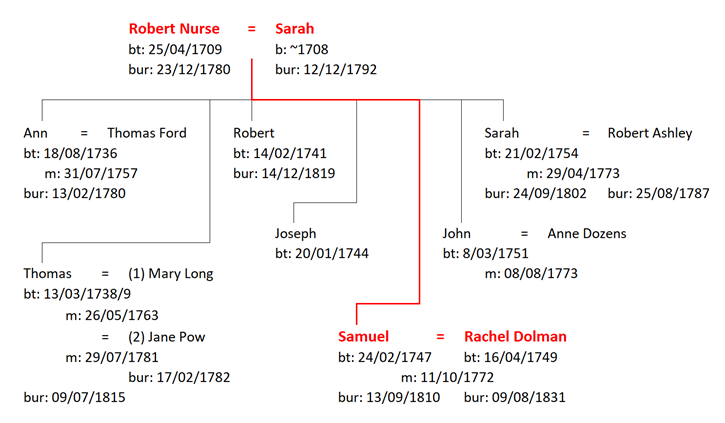
John was married to Anne Dozens in the neighbouring parish of St. John, Bedminster106
As I described above Samuel, my direct ancestor married Rachel Dolman at Keynsham on the 11th October 1772.
By the late 18th century, parishes were required to complete a standard registration form, and for both Sarah and Samuel’s marriages Robert Nurse is listed as a witness. Whether, this was the father or the elder brother is not clear, but it was probably the brother, as all three children moved to the Hanham area at about the same time.
In the Compton Dando Land Tax assessments for 1781,107 Robert Nurse is mentioned as the occupier of three pieces of land, owned by James Pittman, Robert Ford and John Ford, the total assessment for these three pieces of land being £1 14s 3d (quite a considerable sum in those days). This may have been the same land on the Woolard-Houndstreete road mentioned earlier.108
In December of 1781, just before Christmas, Robert Nurse died. He was buried at Compton Dando on 23rd December 1781109. In the following year’s tax assessment, Sarah Nurse is shown as the occupier of only one of the pieces of land - the piece owned by James Pittman, which she continued to occupy until her death in December 1792.
Sarah was also buried in Compton Dando, on 12th December 1792110. In the parish register entry for her death it states that she was 84 years old. This is probably not completely accurate, as it would mean that she was 28 years old when she had her first child, and 46 years old when she had her last child. However, even if it is a slight exaggeration it was still a ripe old age indeed for the 18th century. It also states that she was a pauper.
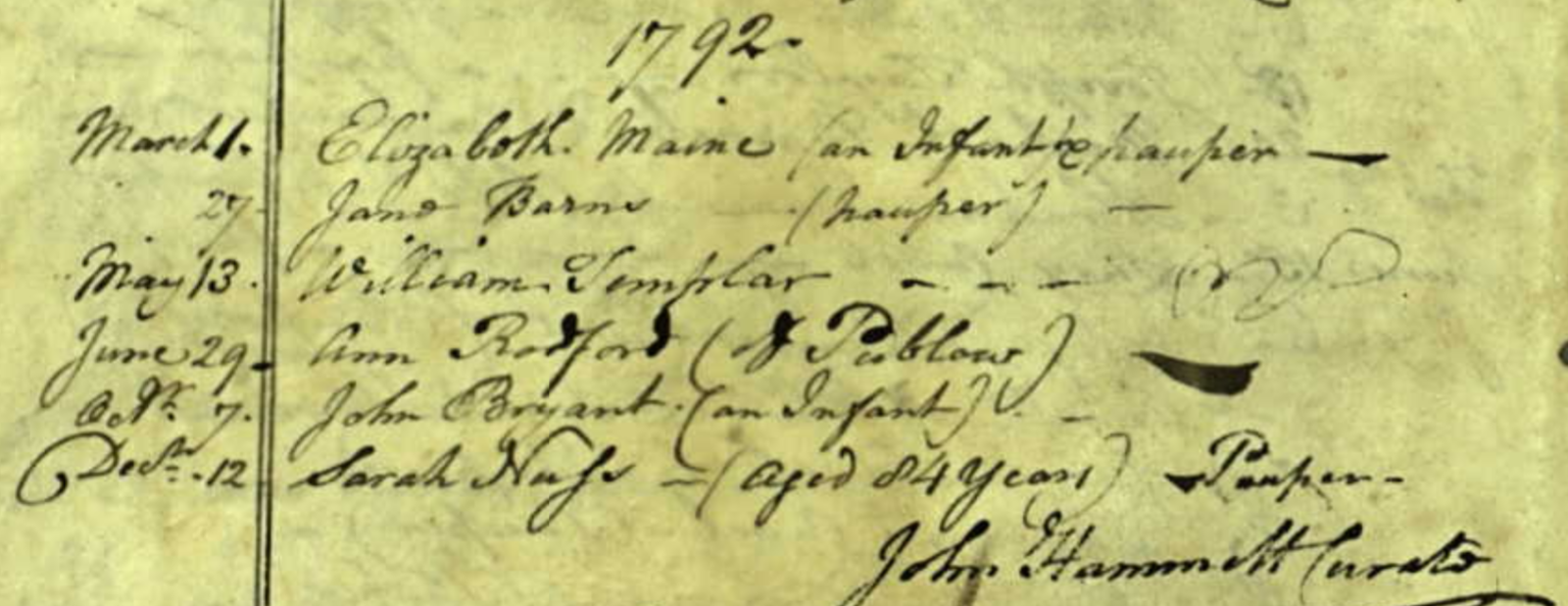
3.7 William Nurse of Chew Stoke (Born 1675)
6th Great Grandfather – FFFFFFFF
While the records are not complete, and where available, are not always legible, a survey of the parish registers in northern Somerset111 reveals that the only references to a Nurse family in the late 17th and early 18th century are to William and Rebecca Nurse of Chew Stoke (sometime part of the parish of Chew Magna).
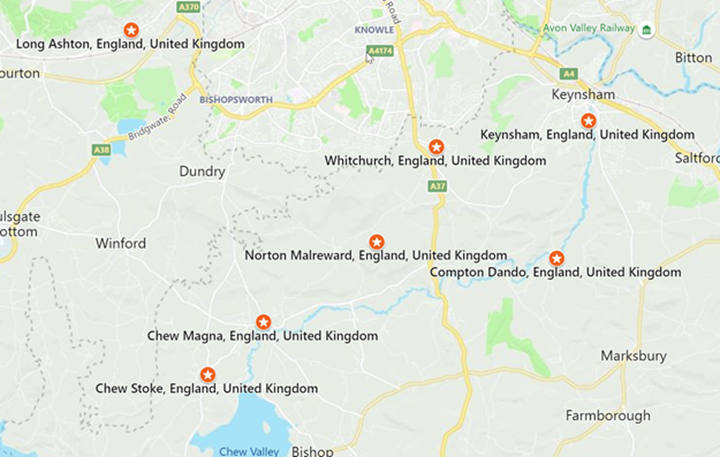
William Nurse was married to Rebekah(sic) Cox in the parish of Norton Malreward on July 1st 1694.112 The parish register notes that both were from Chew Stoke, and the parish register for Chew Stoke reveals the baptisms of three children Robert113, William114 and John115, as well as the burial of the eldest child, Robert116.

The reference in the Chew Stoke parish register to the burial of the infant Robert Nurse is interesting as it was an affidavit under the Burial in Woollen Act of 1678 (see “Burying in Woollen Acts” (2023)). The reference is as follows:
Robert Nurse was buried January 5, 1695
Rebecca Nurse of Chew Stoke hath made affidavit before Robert Payne Rector of Norton Malreward in the presence of Mary Lassey and Jone Walker for burying in woolen. – January 12 1695

Between 1705 and 1730 the parish register is illegible, but I believe that William and Rebecca had at least one more child and named him Robert as well. As mentioned before it was quite common to name a child after a deceased sibling. There is a reference in the parish register of Long Ashton, another Somerset parish just to the south of Bristol, in 1709 of the baptism of Robert son of William Nurse117, and I believe this is William and Rebecca’s son.
This Robert, moved to Compton Dando in the early 1730’s. I believe that he is my 5th great grandfather, as described above. In fact it appears from the parish registers of Compton Dando that the other two sons, John and William as well as Rebecca also moved to the Compton Dando area.
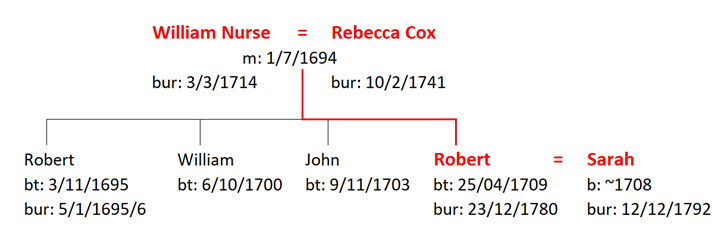
In 1714, William Nurse was buried in Keynsham parish118. In the burial register he is listed as being “of Chewton”. Chewton is a small village on the road from Keynsham to Compton Dando. His wife Rebecca was buried in Compton Dando in 1741119.
The eldest surviving son William apparently moved to Whitchurch, another neighboring parish to the south of Bristol, and the parish register reveals that he had 7 children – John (baptized in 1728), William (baptized in 1733), James (baptized in 1735), Sarah (baptized in 1737/8), Robert (baptized in 1739/40), Robert (baptized in 1742/3) and Elizabeth (baptized in 1745).120
One of them, James was also baptized, the week before, in Compton Dando, probably while they were visiting William’s mother, Rebecca, who as mentioned above was probably living in Compton Dando at the time.121
Although people did not travel very far in the early 18th century, this conclusion is still quite reasonable, as the parishes concerned are quite close to each other. As can be seen quite clearly in Figure 3.39, no single movement between parishes is more than about 5 miles, which is quite a comfortable walk.
The second son John had three children – John (1736) and William (1738) who were both baptized in Compton Dando and Susannah (1733) who was baptized in Publow122, a neighbouring parish, to the south east.
It appears from the Compton Dando records that all three children married (John to Elizabeth Wilton in 1757, William to Ruth Sage in 1761 and Susannah to Edward Taylor in 1762) and had families of their own.
3.8 Theories on the birth of William Nurse
There is no undisputed evidence of where William was born, but one theory is that he was the William, son of William and Margaret Nurse who was baptised in Wells on 19th February 1667.123 (see Figure 3.43) William and Margaret were married in Wells 10th April 1665. Wells is about 18km from Chew Stoke, so it would not have been a huge undertaking to move from Wells from Chew Stoke.
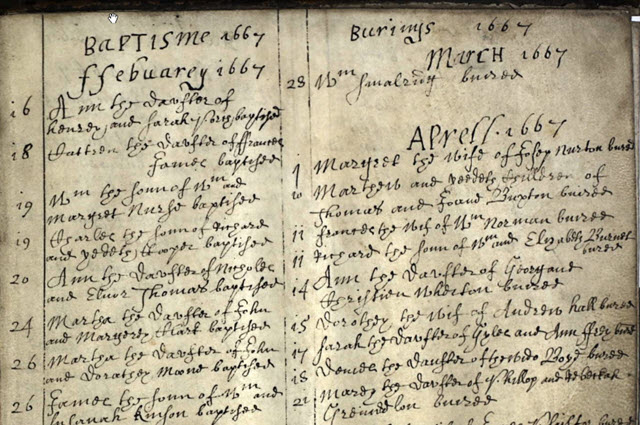
However, an alternative that does not require much movement could be that he was born in Chew Magna and baptised on 14th November 1672,124 the son of William Mourse. (see Figure 3.44)

In the baptism records of the 17th and 18th century it is not unusual to find mutliple variations of names used, as most common people were illiterate and the priest who entered the information often misheard, misspelt or just miswrote names.
3.9 Early References to Nurses in the Chew Magna Area
There are quite a few references to Nurses in the Chew Magna area in the 16th and 17th century although there is not enough evidence to categorically link any of them.
- Will. Nures is mentioned as a witness in the will of Agnes Webbe of West Harptree – proved on 10th April 1535.125
- There are several references in the parish register of Chew Magna, including the baptism of Marie, the daughter of Richard Nure on 5th Apr 1587, and the burials of Joane Nurse of Stoke on 19th November 1573 and Richarde Nurse on 17th March 1597, probably the father of Marie.126